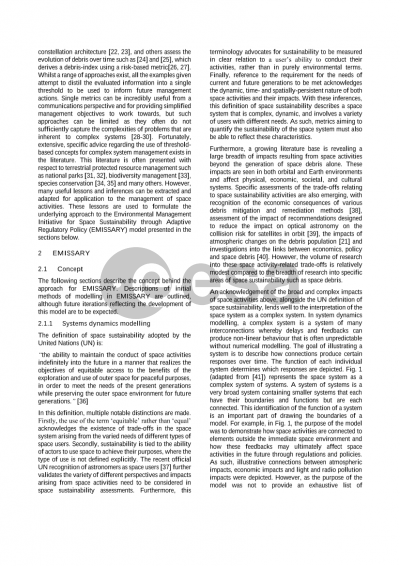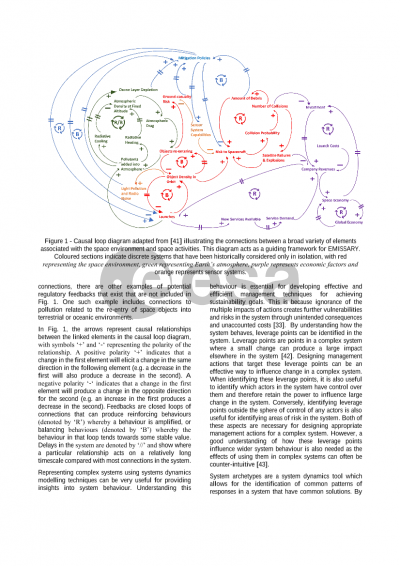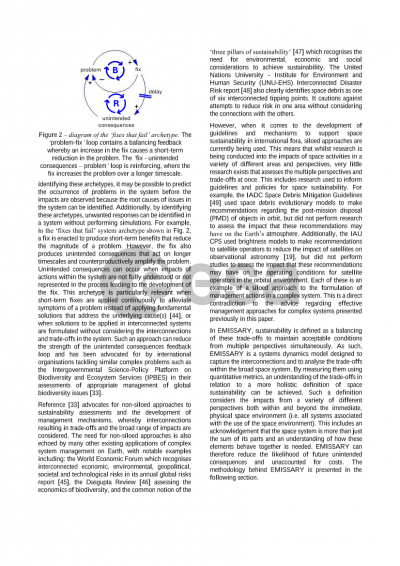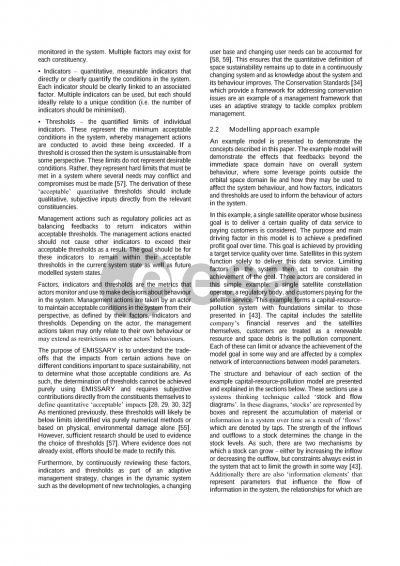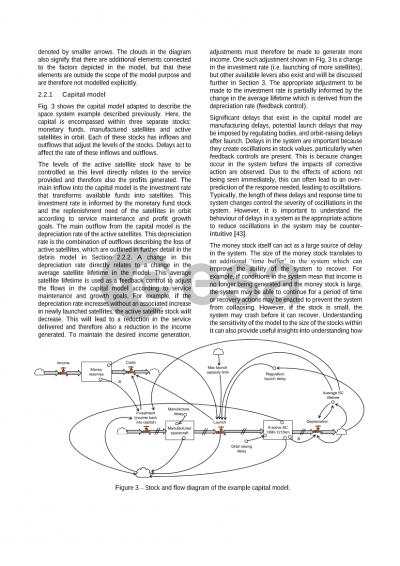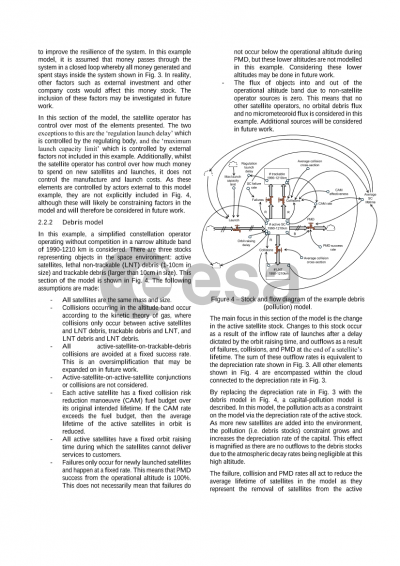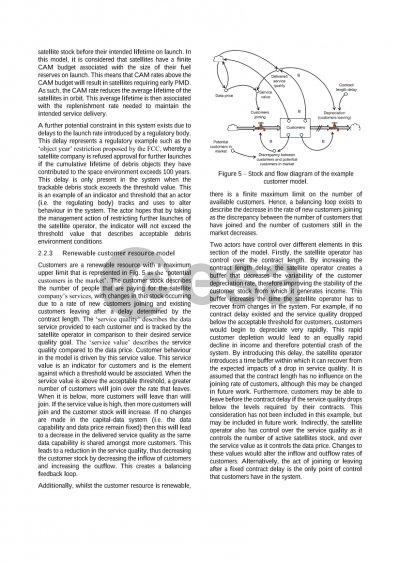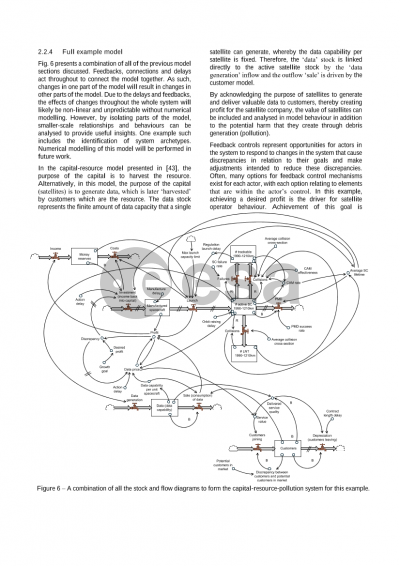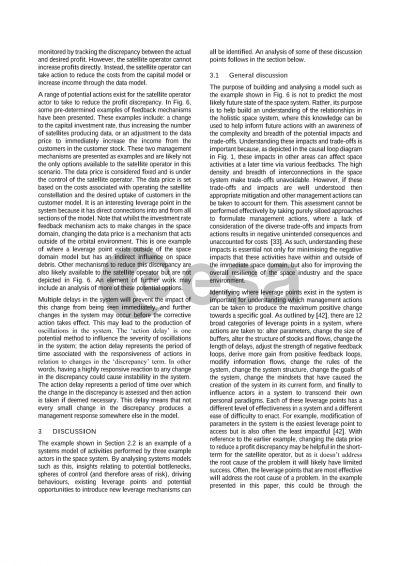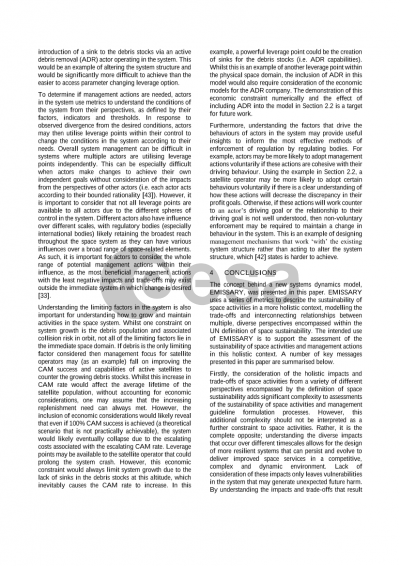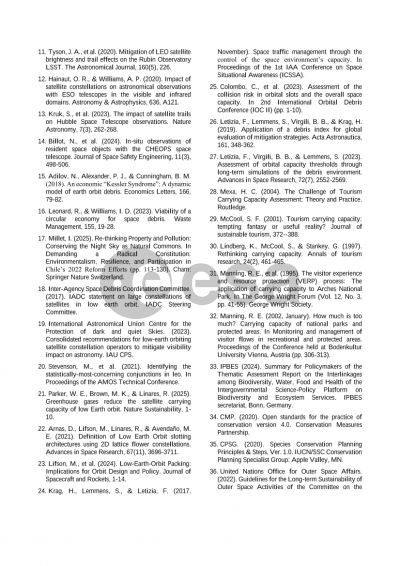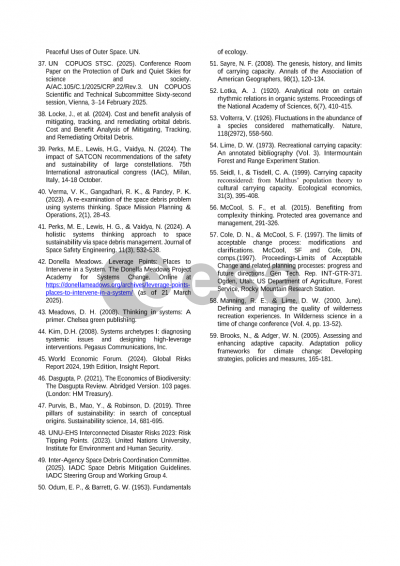Document details
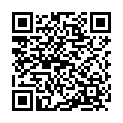
Abstract
Over the past decade, humanity has increased its use of the Low Earth Orbit (LEO) environment by rapidly increasing the number of objects launched into this region of space. With this increase in use comes an increase in the associated impacts. As such, policy tools capable of limiting the impacts of space activities could be useful for managing activities in the LEO environment. One such policy tool is the concept of carrying capacity. In theory, a carrying capacity for use in space management represents limits in space activities beyond which conditions for space users become unsustainable in the long term. However, no clear definition of carrying capacity for the space environment or method of integrating this concept into regulatory frameworks has yet been agreed upon.
This work presents a first iteration of the systems dynamics model EMISSARY which provides a numerical interpretation of carrying capacity concepts for use in the management of LEO space activities. EMISSARY outlines a dynamic, interdisciplinary interpretation of carrying capacity that encompasses lessons from Earth-based applications of carrying capacity concepts for protected resource management. This interpretation goes beyond the assessment of the risk within the space environment alone by also integrating economic, terrestrial environment and other aspects into the formulation of sustainable thresholds for use in management. This is achieved through the use of qualitative inputs from the users of space and those impacted by space activities to identify conditions of importance that are affected by space activities. These conditions are referred to in this work as factors. This qualitative input is then used to derive evidence-based, quantitative thresholds that represent the maximum acceptable changes to the quality of these conditions. These conditions are tracked through the use of quantitative variables referred to here as indicators. By this interpretation, the carrying capacity is exceeded when the indicators for important factors exceed their associated thresholds. When these indicators exceed the defined threshold values, the implementation of management actions should be triggered to return these indicators within acceptable ranges. This interpretation of carrying capacity does not rely on defining points of stability in the system.
This version of EMISSARY acts as a ‘proof of concept’ model. In this work, the evolution of example indicators compared to their thresholds is tracked. This demonstrates how this interpretation of carrying capacity can be applied practically. This work describes the process for identifying the factors representing the important conditions to be monitored, the quantifiable indicators and the associated thresholds that describe the minimum acceptable limits of these conditions. The suitability of using EMISSARY for applying the concept of carrying capacity for use as a regulatory tool for space activities is outlined. The benefits and limitations of this approach and expected future developments are discussed.
Preview

